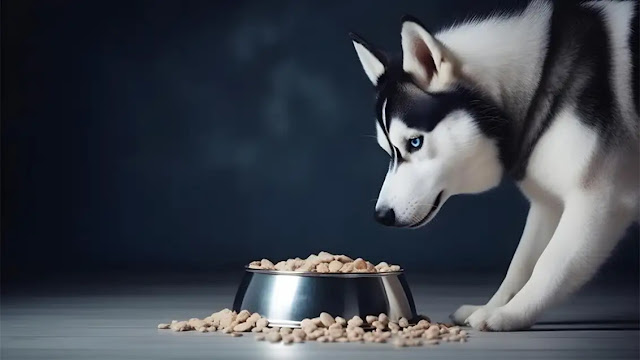what to wear to horseback riding?
Essential Clothing for Horseback Riding
Comfort and safety are key. Start with a well-fitted helmet; it’s non-negotiable for protecting the head. Opt for long pants like riding breeches or jeans to prevent chafing. Wear boots with a heel to avoid slipping from the stirrups. Shirts should be form-fitting to prevent snagging but flexible for easy movement. Avoid baggy clothing and dangling accessories. Gloves can improve grip and prevent blisters. Always prioritize attire designed specifically for riding to ensure the best experience.
Proper Footwear for Horseback Riding
Proper footwear is crucial for horseback riding. Riders should wear boots with a heel of at least one inch. This design helps prevent their feet from slipping through the stirrups. Sturdy boots also protect feet from being stepped on by horses. Avoid sneakers or open-toed shoes, as they offer no protection and can easily get caught. When choosing riding boots, look for options with good ankle support. Ensuring the right footwear enhances both safety and comfort while riding.
Comfortable and Protective Riding Breeches
Riding breeches are vital for horseback riding. They offer flexibility and grip, ensuring comfort and preventing chafing. Riders should choose breeches made from breathable, stretchy material for ease of movement. These pants are designed with reinforced knee patches or full-seat grips for added security in the saddle. Breeches come in various styles and colors to suit different preferences. Jodhpurs, usually worn by children, serve a similar purpose. Both options enhance the riding experience by providing necessary support and protection.
Riding Tops and Accessories
Choosing the right riding top is essential for comfort. Riders should opt for breathable, moisture-wicking fabrics. Long sleeves offer protection from sun and brush. Short sleeves are ideal for hot weather. Proper fit prevents loose clothing from catching on equipment.
Helmets are non-negotiable for safety. They protect the head from falls and collisions. Managing hair is also important. Hairnets or bands keep hair tidy and out of the rider’s face, enhancing focus and visibility.
Choosing the Right Riding Shirt
Opting for the right riding shirt is crucial. Riders should select tops made of breathable fabrics. Moisture-wicking materials keep the body dry during activities. Long sleeves provide added protection against the sun and potential scrapes. In hotter climates, short sleeves offer better ventilation. The shirt should fit snugly, avoiding loose fabric that can catch on gear. Functionality is key: comfort and ease of movement must be prioritized. A well-chosen shirt enhances both performance and safety.
Importance of Helmets and Hair Management
Helmets are essential for rider safety. They protect the head during falls or impacts. Not all injuries can be prevented, but the risk is significantly reduced. Riders should choose ASTM or SEI-approved helmets. Proper fit is crucial for effectiveness. Helmets should sit level on the head and be snug without causing discomfort. Managing hair is equally important. Hair should be tied back or braided to avoid obstruction. A tidy hairstyle ensures the helmet fits correctly and keeps the rider’s vision clear.
Outerwear for Different Weather Conditions
Jackets and Vests for Cold Weather
In cold weather, riders should opt for insulated jackets or vests. These provide warmth without restricting movement. It’s important to choose materials that are both windproof and water-resistant. Layering is key. Riders should wear thermal layers underneath for additional warmth. Breathable fabrics will help prevent overheating during activity. A good choice for top layers is fleece or wool.
Lightweight Options for Riding in Hot Weather
For hot weather, lightweight and breathable options are essential. Riders should select moisture-wicking fabrics to stay cool and dry. Sun shirts with UV protection are ideal. They safeguard against sunburn while keeping the rider comfortable. Mesh vents can enhance airflow. A lightweight hat or visor can also help protect from the sun.
Jackets and Vests for Cold Weather
Riders should opt for insulated jackets or vests in cold weather. These options provide warmth without restricting movement. It’s important to choose materials that are both windproof and water-resistant. Layering is key. Riders should wear thermal layers underneath for additional warmth. Breathable fabrics help prevent overheating during activity. A good choice for top layers is fleece or wool. Remember, the right outerwear ensures a comfortable and enjoyable ride, even in the coldest conditions.
Lightweight Options for Riding in Hot Weather
In hot weather, riders should wear lightweight, breathable materials. Moisture-wicking shirts keep the body cool and dry. Short sleeves or tank tops work well. Riders should opt for breeches or riding tights made from lightweight, ventilated fabrics. These help maintain comfort and prevent overheating. Lightweight socks are another must to keep feet cool. Ventilated helmets are essential for airflow and protection. Additionally, wearing ventilated gloves can help keep hands comfortable and maintain a good grip on the reins.
Equine Riding Gear
Quality riding gear is vital for both rider and horse. A well-fitted saddle ensures comfort and stability. Stirrup irons should match the rider’s foot size to provide proper support. Durable reins offer better control and safety. Riding gloves enhance grip and prevent blisters. Whips can be used for guidance without causing harm. Rugs or blankets keep the horse warm post-riding. Ensuring the right gear not only boosts performance but also safeguards the riding experience for both parties involved.
Saddle and Stirrup Considerations
A well-fitted saddle is crucial for both rider and horse comfort. It should sit properly on the horse’s back to avoid pain or injury. The size of the saddle must match the rider’s body to ensure stability. Stirrup irons need to fit the rider’s foot correctly. An ill-fitting stirrup can cause balance issues and discomfort. Adjustable stirrup lengths help various riders maintain proper posture. Regular checks of both saddle and stirrups are important for safety and performance.
Importance of Riding Gloves and Whips
Riding gloves protect the rider’s hands from blisters and chafing. They provide a better grip on the reins, especially when dealing with a spirited horse. Gloves also keep hands warm in cold weather. Whips are used to give precise commands to the horse. They help in reinforcing leg signals without causing harm. It’s essential to choose gloves and whips that are comfortable and appropriate for the discipline. Regular maintenance ensures these tools last longer and perform well.
Safety and Visibility
Reflective gear is crucial for riding in low-light conditions. This gear ensures that riders are visible to motorists and other trail users. Reflective vests and bands can be easily added to any outfit. Additionally, safety vests provide extra protection in case of falls or accidents. They are designed to absorb impact, safeguarding vital organs. Riders should consider bright, high-visibility clothing when out on trails. These measures significantly enhance safety and ensure a more secure riding experience.
Reflective Gear for Riding in Low-Light Conditions
Visibility on the trails is crucial, especially in low-light conditions. Riders should wear reflective clothing and gear to ensure they are easily seen. Reflective vests, bands, and hat bands are great additions. It’s also wise to fit the horse with reflective bands above the fetlock joints. A white light at the front and a red light at the rear can further enhance visibility. These measures significantly reduce the risk of accidents and ensure a safer riding experience for both rider and horse.
Safety Vests and Protectors for Added Protection
Wearing safety vests and protectors is essential for mitigating injury risks while horseback riding. These items provide crucial protection to the torso, especially during falls. Riders can choose from foam and airbag vests, each offering unique benefits. Foam vests provide consistent protection and are widely used. Airbag vests, while newer, offer advanced impact protection by inflating during a fall. Regardless of the type, ensuring a vest fits properly is key to maximizing safety. The added protection can make a significant difference in injury outcomes.
Conclusion and Additional Tips
Horseback riding requires proper attire for safety and comfort. Riders should choose tailored pants or breeches to avoid chafing. Helmets and protective vests are essential for injury prevention. Reflective gear enhances visibility in low-light conditions. Regular maintenance of riding gear extends its life. Cleaning saddles, boots, and gloves after every use is crucial. Air out clothes to prevent odors. Now that the basics are covered, riders can confidently select their gear and enjoy a safe riding experience.
Summary of Essential Riding Attire
Riders need to prioritize safety and comfort. A helmet is crucial for head protection. Riding breeches or tailored pants prevent chafing. Proper footwear includes closed-toe shoes with a low heel for stability. Gloves provide grip and protect hands. In colder weather, adding a jacket and gloves is essential. Reflective gear enhances visibility in low light. Safety vests add an extra layer of protection. Each piece of attire contributes to a safer and more enjoyable riding experience.
Tips for Maintaining Riding Gear
Riding gear requires regular maintenance for longevity. Always clean boots after each ride to remove dirt and debris. Use a soft brush on saddles and reins to keep leather supple. Avoid leaving gear in direct sunlight to prevent fading and cracking. Check for loose stitching or wear and tear, repairing promptly. Wash cloth items like riding shirts and breeches regularly, following care instructions. Store helmets in a cool, dry place. Periodic checks and care ensure the gear remains in great condition for every ride.
Greetings from the Petworled website management, we wish you success and see you in another article on our website.














